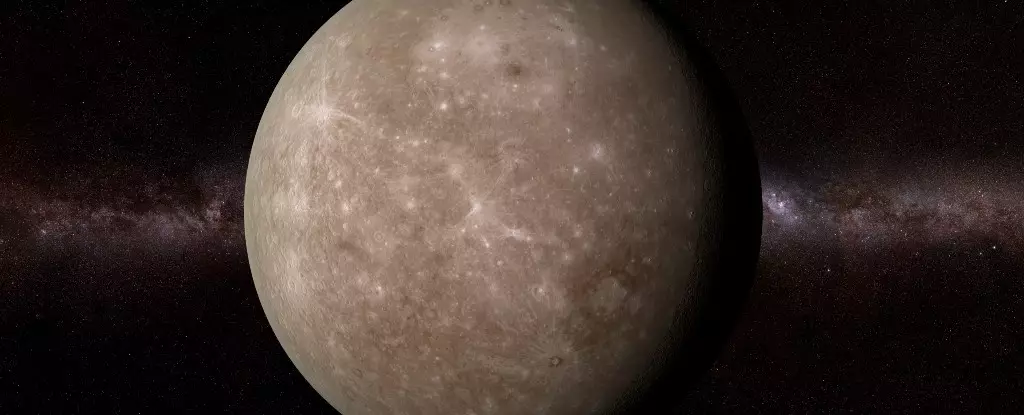Mercury, often considered the runt of the Solar System, may hold a hidden treasure in the form of a 15-kilometer thick layer of solid diamond deep within its core. Recent simulations of Mercury’s early development have led scientists to reconsider the traditional views of the planet’s internal environment. These findings have the potential to shed light on the formation of rocky planets like Mercury and could also offer an explanation for the planet’s mysterious magnetic field.
Based on data from the MESSENGER missions, researchers have proposed that the dark patches on Mercury’s surface are composed mainly of carbon in the form of graphite. This led them to speculate that significant quantities of carbon could have crystallized out of the planet’s molten core and risen towards the mantle over time, eventually solidifying into diamond. This newfound understanding challenges previous assumptions about the pressures close to Mercury’s core and suggests that the planet may have been capable of producing diamonds after all.
The Experimental Approach
Using thermodynamic modeling, scientists simulated the extreme conditions under which Mercury would have cooled in its early infancy. By assuming a deeper core-mantle boundary with increased pressures, they conducted experiments that supported the idea of diamond crystallization within the planet’s core. This hypothetical 15 to 18-kilometer thick layer of diamond could have formed over eons, transforming our perception of Mercury’s internal dynamics.
Implications for Planetary Science
The presence of a diamond layer in Mercury’s core could have significant implications for our understanding of planetary cooling, the evolution of rocky planets, and the generation of magnetic fields. The exceptional thermal conductivity of diamond could influence the movement of materials within the planet, affecting its magnetic field and overall internal processes. This new perspective challenges previous assumptions and opens up a world of possibilities in planetary science.
Despite its small size, Mercury boasts a magnetic field, making it unique among rocky planets in the Solar System. Understanding the origins and longevity of Mercury’s magnetic field could provide valuable insights into the planet’s internal structure and development. By reevaluating what lies deep beneath Mercury’s surface, scientists may unravel the mysteries of this enigmatic planet and gain a deeper understanding of its place in the Solar System.
The discovery of a potential diamond layer within Mercury highlights the complexity and richness of our Solar System’s smallest planet. By challenging conventional wisdom and exploring new possibilities, scientists are unlocking the secrets of Mercury’s past and shedding light on the formation of rocky planets. This groundbreaking research paves the way for future discoveries and reshapes our perception of the worlds beyond Earth.


Leave a Reply